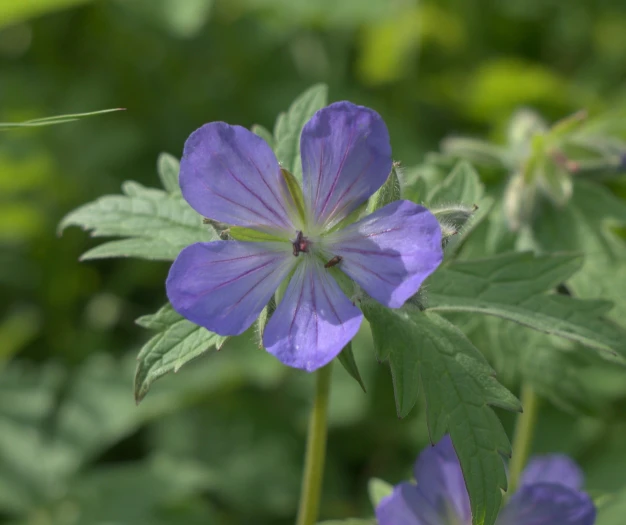Woolly Geranium
(Geranium erianthum)
Woolly Geranium (Geranium erianthum)
/
/

Robert Webster
CC BY-SA 4.0
Image By:
Robert Webster
Recorded By:
Copyright:
CC BY-SA 4.0
Copyright Notice:
Photo by: Robert Webster | License Type: CC BY-SA 4.0 | License URL: http://creativecommons.org/licenses/by-sa/4.0/ | Rights Holder: Robert Webster | Publisher: iNaturalist | Date Created: 2010-07-28T02:02:01-07:00 |






















Estimated Native Range
Climate Requirements for Celina, Texas
| This Plant | Your Site | Plant Suitability for Your Location | ||
|---|---|---|---|---|
| • Precipitation | 10" - 186" | 39" | Aquatic | Aquatic |
| • High Temp. | 33°F - 90°F | 95°F | Your summers may be too hot for this plant. | Too hot |
| • Low Temp. | -52°F - 36°F | 32°F | Your winter temperatures are normal for this plant | Excellent |
This plant may not grow well at your location - your precipitation is too high.
Summary
Geranium erianthum, commonly known as Woolly Geranium, is a perennial herb that is native to a variety of habitats including moist forests, meadows, and streambanks in subalpine and alpine regions in Canada and Alaska. It is found across a wide geographic range, including parts of China, Japan, Russia, North America, and has been introduced to England. This species typically grows to a height of 12-24 inches (30-60 cm) and spreads 12-18 inches (30-45 cm). Woolly Geranium is characterized by its large palmate leaves covered in soft hairs, giving them a woolly texture, and its showy lavender to purple flowers that bloom in the summer months. The flowers are quite attractive and can add a splash of color to garden settings.
Woolly Geranium is valued for its ease of maintenance and its ability to thrive in a variety of soil conditions, though it prefers moist, well-drained soils. It is often used in borders, woodland gardens, and as ground cover due to its attractive foliage and flowers. It requires partial to full sun exposure and regular watering, especially in drier climates. While generally disease-resistant, it can occasionally suffer from rust or leaf spot. Woolly Geranium is not known for aggressive roots or significant invasiveness, making it a safe choice for most gardens. It is also appreciated for its tolerance to cold temperatures and can be a good choice for higher elevation gardens.CC BY-SA 4.0
Woolly Geranium is valued for its ease of maintenance and its ability to thrive in a variety of soil conditions, though it prefers moist, well-drained soils. It is often used in borders, woodland gardens, and as ground cover due to its attractive foliage and flowers. It requires partial to full sun exposure and regular watering, especially in drier climates. While generally disease-resistant, it can occasionally suffer from rust or leaf spot. Woolly Geranium is not known for aggressive roots or significant invasiveness, making it a safe choice for most gardens. It is also appreciated for its tolerance to cold temperatures and can be a good choice for higher elevation gardens.CC BY-SA 4.0
Plant Description
- Plant Type:
- Height: 1-3 feet
- Width: 0.25-1.75 feet
- Growth Rate: Moderate, Slow
- Flower Color: Blue, Pink, Purple
- Flowering Season: Spring, Summer
- Leaf Retention: Deciduous
Growth Requirements
- Sun: Full Sun, Part Shade
- Water: Medium
- Drainage: Fast, Medium
Common Uses
Bee Garden, Border Plant, Butterfly Garden, Groundcover, Low Maintenance
Natural Habitat
Native to moist forests, meadows, and streambanks in subalpine and alpine regions
Other Names
Common Names: Northern Crane’s-Bill , Northern Geranium
Scientific Names: Geranium erianthum , Geranium elatum , Geranium elatum , Geranium erianthum f. albiflora , Geranium erianthum f. alpestre , Geranium erianthum f. alpestris , Geranium erianthum f. commune , Geranium erianthum f. communis , Geranium erianthum f. leucanthum , Geranium erianthum f. pallescens
GBIF Accepted Name: Geranium erianthum